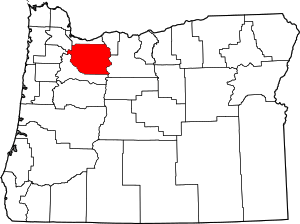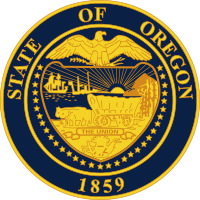Milwaukie, Oregon
Milwaukie /mɪlˈwɔːki/ is a city mostly in Clackamas County, Oregon, United States; a very small portion of the city extends into Multnomah County.[5] The population was 20,291 at the 2010 census. Founded in 1847 on the banks of the Willamette River, the city, known as the Dogwood City of the West, was incorporated in 1903 and is the birthplace of the Bing cherry. The city is now a suburb of Portland and also adjoins the unincorporated areas of Clackamas and Oak Grove.
Milwaukie | |
|---|---|
| Milwaukie, Oregon | |
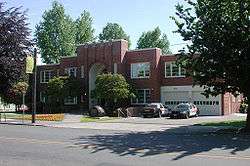 Exterior of Milwaukie City Hall, 2009 | |
 Flag 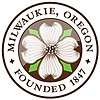 Seal | |
| Nickname(s): The Dogwood City of the West | |
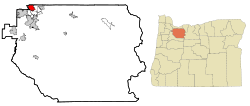 Location in Oregon | |
| Coordinates: 45°26′46″N 122°38′21″W | |
| Country | United States |
| State | Oregon |
| Counties | Clackamas, Multnomah |
| Incorporated | 1903 |
| Government | |
| • Type | Mayor-council government |
| • Mayor | Mark Gamba |
| Area | |
| • Total | 5.09 sq mi (13.18 km2) |
| • Land | 4.93 sq mi (12.77 km2) |
| • Water | 0.16 sq mi (0.41 km2) |
| Elevation | 43 ft (13 m) |
| Population | |
| • Total | 20,291 |
| • Estimate (2019)[3] | 20,990 |
| • Density | 4,258.47/sq mi (1,644.06/km2) |
| Time zone | UTC−8 (Pacific) |
| • Summer (DST) | UTC−7 (Pacific) |
| ZIP codes | 97222, 97267, 97269 |
| Area code(s) | 503 and 971 |
| FIPS code | 41-48650[2] |
| GNIS feature ID | 1166682[4] |
| Website | www.milwaukieoregon.gov |
History
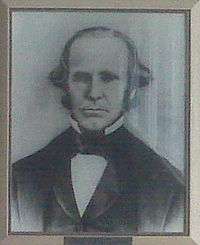
Milwaukie was settled in 1847 and formally platted in 1849 as a rival to the upriver Oregon City by Lot Whitcomb, who named it for Milwaukee, Wisconsin. At the time, the Wisconsin city was also frequently spelled "Milwaukie" before the current spelling was adopted.[6] Some accounts also state that the Oregon city used an alternate spelling to prevent confusion at the post office.[7]
Whitcomb arrived in Oregon in 1848 and settled on a donation land claim, where he built a sawmill and a gristmill.[8] Milwaukie rivaled Portland and Oregon City for a time, but Portland eventually became the bigger city because it had a deeper port.[8] The first post office at Milwaukie was established in 1850, with Whitcomb as the first postmaster.[6] The community was incorporated by the Oregon Legislative Assembly on February 4, 1903, originally as the Town of Milwaukie.[9]
The Oregon and California Railroad named their station there Milwaukee in 1870 and corrected it to Milwaukie in 1892.[6] As the city center grew further from the railroad and a branch line was built across the Willamette to Oswego, Milwaukie station was replaced and renamed Lambert for Joseph H. Lambert, a pioneer orchardist who developed the Lambert cherry.[6] The name of the station was changed to East Milwaukee in 1913 and corrected to East Milwaukie in 1916.[6]
The Bing cherry, among other varieties, was developed in Milwaukie by another pioneer orchardist, Seth Lewelling, who settled in the area with his brother Henderson Luelling.[8]
Geography
According to the United States Census Bureau, the city has a total area of 4.85 square miles (12.56 km2), of which, 4.82 square miles (12.48 km2) is land and 0.03 square miles (0.08 km2) is water.[10]
Demographics
2010 census
| Historical population | |||
|---|---|---|---|
| Census | Pop. | %± | |
| 1880 | 125 | — | |
| 1890 | 489 | 291.2% | |
| 1910 | 860 | — | |
| 1920 | 1,172 | 36.3% | |
| 1930 | 1,767 | 50.8% | |
| 1940 | 1,871 | 5.9% | |
| 1950 | 5,253 | 180.8% | |
| 1960 | 9,099 | 73.2% | |
| 1970 | 16,444 | 80.7% | |
| 1980 | 17,931 | 9.0% | |
| 1990 | 18,692 | 4.2% | |
| 2000 | 20,490 | 9.6% | |
| 2010 | 20,291 | −1.0% | |
| Est. 2019 | 20,990 | [3] | 3.4% |
| Sources:[2][11][12][13][14] | |||
As of the census of 2010, there were 20,291 people, 8,667 households, and 5,075 families residing in the city. The population density was 4,209.8 inhabitants per square mile (1,625.4/km2). There were 9,138 housing units at an average density of 1,895.9 per square mile (732.0/km2). The racial makeup of the city was 88.5% White, 1.3% African American, 1.3% Native American, 2.5% Asian, 0.3% Pacific Islander, 2.5% from other races, and 3.6% from two or more races. Hispanic or Latino of any race were 7.0% of the population.[2]
There were 8,667 households, of which 27.9% had children under the age of 18 living with them, 41.5% were married couples living together, 11.9% had a female householder with no spouse present, 5.2% had a male householder with no spouse present, and 41.4% were non-families. 31.8% of all households were made up of individuals, and 10.4% had someone living alone who was 65 years of age or older. The average household size was 2.32 and the average family size was 2.91.[2]
The median age in the city was 39.9 years. 20.7% of residents were under the age of 18; 7.7% were between the ages of 18 and 24; 28.8% were from 25 to 44; 29.2% were from 45 to 64; and 13.6% were 65 years of age or older. The gender makeup of the city was 48.6% male and 51.4% female.[2]
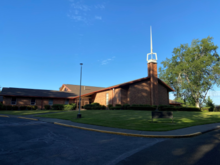
2000 census
As of the census of 2000, there were 20,490 people, 8,561 households, and 5,282 families residing in the city. The population density was 4,256.5 people per square mile (1,644.7/km2). There were 8,988 housing units at an average density of 1,867.1 per square mile (721.5/km2). The racial makeup of the city was 90.96% White, 0.95% African American, 0.94% Native American, 2.36% Asian, 0.25% Pacific Islander, 1.60% from other races, and 2.94% from two or more races. Hispanic or Latino of any race were 3.97% of the population.[2]
There were 8,561 households, out of which 28.3% had children under the age of 18 living with them, 45.8% were married couples living together, 11.3% had a female householder with no spouse present, and 38.3% were non-families. 30.3% of all households were made up of individuals, and 10.4% had someone living alone who was 65 years of age or older. The average household size was 2.35 and the average family size was 2.93.[2]
In the city, the population was spread out, with 22.8% under the age of 18, 8.1% from 18 to 24, 31.2% from 25 to 44, 24.1% from 45 to 64, and 13.7% who were 65 years of age or older. The median age was 38 years. For every 100 females, there were 93.8 males. For every 100 females age 18 and over, there were 89.6 males.[2]
The median income for a household in the city was $43,635, and the median income for a family was $51,649. Males had a median income of $36,674 versus $29,957 for females. The per capita income for the city was $21,342. About 6.2% of families and 7.6% of the population were below the poverty line, including 9.4% of those under age 18 and 6.6% of those age 65 or over.[2]
Economy
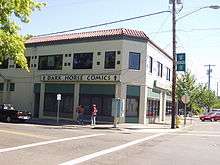
Currently, the downtown area of Milwaukie is undergoing a revival in which new apartments and retail space are under construction and a riverfront park is being developed.[15]
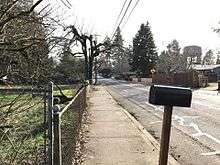
Milwaukie is the home of Dark Horse Comics. Dark Horse is known for publishing works including Sin City, the character Hellboy, and the original graphic novel series 300, as well for producing dozens of films and television series, including The Mask and TimeCop, based on characters created by Dark Horse founder Mike Richardson. The total office space of Dark Horse Comics occupies three of the city blocks in downtown Milwaukie, sporting numerous display windows visible to transit riders.[16]
Bob's Red Mill is located here and employs a few hundred people.[17][18]
Housing
From 2015-2016 Milwaukie saw a boom in real estate. It was named the ninth hottest real estate market in 2016 by realtor.com.[19] A big draw to the city was noticed right after the Orange-line from TriMet finished in 2015. A 1.4 billion dollar project connecting the close-in suburb right to the heart of downtown Portland. A year into the new Orange-line, pricing for homes raised up 12.2% and city officials said there are zero vacancies for retail storefronts in Milwaukie's downtown area.[20] In addition to the new Orange-line, Milwaukie finished a 2.2 million dollar project to the cites waterfront park. The city had a grand opening on May 1, 2015.[21]
Top employers
According to Milwaukie's 2012 Comprehensive Annual Financial Report,[22] the top employers in the city are:
| # | Employer | # of Employees |
|---|---|---|
| 1 | Unified Grocers | 630 |
| 2 | PCC Structurals | 500 |
| 3 | RM International | 500 |
| 4 | North Clackamas School District | 385 |
| 5 | Meggitt OECO | 425 |
| 6 | Safeway | 280 |
| 7 | Warn Industries | 250 |
| 8 | Sabin-Schellenberg Center | 200 |
| 9 | Goodwill Industries of the Columbia Willamette | 200 |
| 10 | Marquis Companies | 200 |
Education
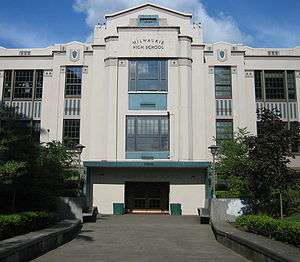
Milwaukie is served by the North Clackamas School District and most children attend one of ten public elementary schools, four public middle schools, Rex Putnam High School, Milwaukie High School, and New Urban High School. Since 1996, Milwaukie High School has annually hosted the nationally recognized[23] Living History Day. On this day thousands of veterans are welcomed into the school to help educate students about the past.
There is also a private Catholic high school, La Salle High School, named after St. Jean-Baptiste de la Salle, and the Portland Waldorf School, a private Waldorf school, which serves grades K–12.
The city is home to the Ledding Library, a public library that is part of the Library Information Network of Clackamas County.
The city has one college Clackamas Community College Harmony.[24]
Transportation
Public transit
Current
Milwaukie is within the TriMet transit district and is served by several TriMet bus lines.[25] TriMet established a transit center in downtown Milwaukie in 1981,[26] served by as many as 12 routes (in 2000),[27] using on-street stops around the intersection of Jackson Street and 21st Avenue, next to Milwaukie City Hall. Since 2010, the bus stops that previously comprised Milwaukie TC are no longer designated as a "transit center" by TriMet. In fall 2015, the focal point for rider transfers between routes shifted southward from the former transit-center location, with the opening of a new light rail station at the south end of downtown.
TriMet's MAX Light Rail service was extended to Milwaukie on September 12, 2015.[28] Construction of the MAX Orange Line, a light-rail connection between Portland and Milwaukie, began in 2011.[29][30] Although this project was planned for many years, it faced strong opposition by opponents of "Portland Creep";[31] in September 2012, opponents succeeded in passing a ballot initiative requiring that all Clackamas County spending on light rail be directly approved by the voters.[32] The 7.3-mile (11.7 km) line was sufficiently complete by May 15, 2015, for 500 passengers to make an initial special run along its whole length.[33] Regular passenger service began four months later.[28]
Past
Streetcars began serving Milwaukie in August 1892, when the East Side Railway Company extended its service beyond the then-town of Sellwood.[34] The company built a carbarn and workshop in downtown Milwaukie, on Jackson Street at River Road (now McLoughlin Blvd. at that location), which opened in December 1892.[35] The following year, the company extended its line to Oregon City, and interurban service between Portland and Oregon City via Milwaukie began operating.[34][35] During the several decades after 1900, a succession of other private companies, including the Portland Railway, Light and Power Company, operated the streetcar and interurban service to and through the town.[34] All interurban service was discontinued in January 1958.[34][36] At the time, the Portland–Milwaukie–Oregon City and Portland–Sellwood–Bellrose lines had been the last streetcar or interurban service operating in the Portland metropolitan area, and not until 1986 did interurban service return—in the form of MAX (light rail) between Portland and Gresham.[36] Oregon Motor Stages, Inc., had provided some bus service through Milwaukie until 1954, when it abruptly ceased all operation.[37] Replacement transit-bus service was introduced in 1955 by Intercity Buses, Inc.,[38] a member of a consortium of four bus companies collectively known as the "Blue Bus" lines, and Intercity expanded its service after the 1958 abandonment of the rail service.[39] TriMet, a new government-owned public transit authority, was established in 1969, and in September 1970 it took over all of the "Blue Bus" companies.[40][41] TriMet has been the primary provider of transit service in Milwaukie since that time.
Former Amtrak
Amtrak passenger trains pass through Milwaukie without stopping. However, for a brief period in the early 1980s an experimental Amtrak service named the Willamette Valley Express made a regular stop in Milwaukie, just east of the intersection of Harrison Street and Highway 224 (a location Amtrak referred to as East Milwaukie).[42] The service, which ran twice a day in each direction and connected Portland with Eugene, was introduced on a trial basis in August 1980 and discontinued at the end of 1981.[43]
Mayors
- William Shindler (1903–09)
- Philip Streib (1909–13)
- E.T. Elmer (1913–15)
- Guy C. Pelton (1915–17)
- John Snyder (1917–23)
- Alfred E. Cowell (1923–27)
- J.J. Miller (1927–35)
- J.M. Mason (1935)
- William Sanders (1935–37)
- Earl S. Burdick (1937–40)
- Fred O. Roberts (1940–45)
- Fred Sperr (1945–52)
- Leonard Mullan (1952–59)
- Earl Clay (1959–63)
- Joe Bernard, Jr. (1963–65)
- George Haley (1965)
- Robert Richmond (1965–68)
- Frank Clore (1968–69)
- Donald Graf (1969–75)
- Bill Hupp (1975–79)
- Allen Manuel (1979–80)
- Joy Burgess (1980–84)
- Ron Kinsella (1984–86)
- Roger Hall (1986–90)
- Craig Lomnicki (1990–98)
- Donald Graf (1998)
- Carolyn Tomei (1998–2001)
- James Bernard (2001–09)
- Jeremy Ferguson (2009–15)[44]
- Wilda Parks (2015)[45]
- Mark Gamba (2015–present)[46]
Current mayor Mark Gamba took office on May 19, 2015, previously serving on the Milwaukie City Council.[47][48]
Notable people
- Mike Bliss, NASCAR driver
- Scott Brosius, Major League Baseball third baseman for Oakland Athletics and New York Yankees, 1998 World Series MVP
- Cazzey Louis Cereghino, actor, singer, writer
- Peter Cookson, film, stage and television actor
- Dave Husted, professional ten-pin bowler; three-time winner of PBA U.S. Open[49]
- Keynan Middleton, Major League pitcher for Los Angeles Angels organization
- Kenneth L. Reusser, Marine Corps aviator
- Mike Richardson, publisher, Emmy Award-winning producer and founder of Dark Horse Comics
- Chael Sonnen, MMA fighter
- Dorothy Hester Stenzel, aviator and stunt pilot[50]
- Monroe Sweetland, politician
- William S. U'Ren, political activist
- Carolyn Tomei, former State Representative
- Karin Power, State Representative
Sister city
Milwaukie's sister city is Iwaki, Aomori, Japan.[51]
References
- "2019 U.S. Gazetteer Files". United States Census Bureau. Retrieved July 28, 2020.
- "U.S. Census website". United States Census Bureau. Retrieved 2012-12-21.
- "Population and Housing Unit Estimates". United States Census Bureau. May 24, 2020. Retrieved May 27, 2020.
- "US Board on Geographic Names". United States Geological Survey. 2007-10-25. Retrieved 2008-01-31.
- House, Kelly (2013-11-04). "Multnomah County Election: District Boundary Quirks Put Hillsboro Measure on Ballot". The Oregonian. Retrieved 2013-11-05.
- McArthur, Lewis A.; Lewis L. McArthur (2003) [1928]. Oregon Geographic Names (Seventh ed.). Portland, Oregon: Oregon Historical Society Press. pp. 557, 648. ISBN 0-87595-277-1.
- "City Facts & Trivia". City of Milwaukie. Retrieved 2015-04-14.
- Cogswell, Philip Jr. (1977). Capitol Names: Individuals Woven Into Oregon's History. Portland, Oregon: Oregon Historical Society. pp. 113–115.
- Whitney, J. R. (1905). "The Special Laws of the State of Oregon Enacted by The Twenty-third Legislative Assembly Regular Session". Salem, Oregon: State Printer: 1. Cite journal requires
|journal=(help) - "US Gazetteer files 2010". United States Census Bureau. Archived from the original on 2012-01-25. Retrieved 2012-12-21.
- "Population-Oregon" (PDF). U.S. Census 1910. U.S. Census Bureau. Retrieved 22 November 2013.
- "Population-Oregon" (PDF). 15th Census of the United States. U.S. Census Bureau. Retrieved 27 November 2013.
- "Number of Inhabitants: Oregon" (PDF). 18th Census of the United States. U.S. Census Bureau. Retrieved 22 November 2013.
- "Oregon: Population and Housing Unit Counts" (PDF). U.S. Census Bureau. Retrieved 22 November 2013.
- "Milwaukie is Poised for Growth". Archived from the original on May 17, 2009. Retrieved May 1, 2009.
- Boucher, Geoff (2008-05-19). "Welcome to Milwaukie, Ore., Hellboy's Hometown". Los Angeles Times. Retrieved 2009-05-01.
- "Meet Bob & Charlee". Bob's Red Mill. Retrieved 2019-09-17.
- Sahadi, Jeanne (2020-02-14). "Bob's Red Mill founder is still working in his 90s and loving it". MSN. Retrieved 2020-02-23.
- Vivas, Javier (2016-09-22). "Realtor.com Ranks the Hottest ZIP Codes for 2016". Realtor.com Economic Research. Retrieved 2019-11-17.
- Njus, Elliot (2016-10-07). "Milwaukie basks in MAX Orange Line's economic glow". oregonlive. Retrieved 2019-11-17.
- "Milwaukie Riverfront Park | City of Milwaukie Oregon Official Website". www.milwaukieoregon.gov. Retrieved 2019-11-17.
- "City of Milwaukie, Oregon, Comprehensive Annual Financial Report for the Fiscal Year Ended June 30, 2012" (PDF). City of Milwaukie. 2012. Archived from the original (PDF) on September 4, 2015. Retrieved 2015-04-14.
- "Living History Day: Milwaukie High School". The Virtual Schoolhouse.
- http://www2.clackamas.edu/harmonyvision/resources.html
- "TriMet".
- Oliver, Gordon (June 14, 1981). "Two new [bus] lines begin Milwaukie service". The Oregonian (Clackamas County edition), p. B2.
- "Milwaukie Transit Center [with map]". TriMet. 2000. Archived from the original on August 23, 2000. Retrieved August 12, 2015.
- Njus, Elliot (September 12, 2015). "The wait's over: TriMet's Orange Line, Tilikum Crossing up and running". The Oregonian. Retrieved September 18, 2015.
- Rose, Joseph (June 29, 2011). "Construction begins on new light-rail bridge in Portland that will go up 'piece by piece'". The Oregonian. Retrieved August 12, 2015.
- "Portland-Milwaukie Light Rail Transit Project Fact Sheet" (PDF). TriMet. June 2014. Retrieved August 12, 2015.
- "Checkpoint Clackamas! Keeping Portland Out—to Let More Republicans In?". Retrieved 27 November 2012.
- "Clackamas County anti-rail measure passes comfortably; effect could resonate for decades". Retrieved 27 November 2012.
- Tomlinson, Stuart (May 15, 2015). "Kate Brown, 500 Others Are First Passengers on MAX's New Orange Line". The Oregonian. Retrieved June 27, 2015.
- Labbe, John T. (1980). Fares, Please! Those Portland Trolley Years. Caldwell, Idaho (US): The Caxton Printers. p. 100. ISBN 0-87004-287-4.
- Thompson, Richard (2012). Portland's Interurban Railway. Arcadia Publishing. pp. 25, 27. ISBN 978-0-7385-9617-4.
- Thompson, Richard (2006). Portland's Streetcars. Arcadia Publishing. pp. 114, 121, 123. ISBN 0-7385-3115-4.
- "Oswego Fete Due Bus Line: Regular Service Set Next Monday". (February 3, 1955). The Oregonian, p. 8.
- "Bus Service To Start Soon" [regarding Intercity Buses]. (January 20, 1955). The Oregonian, p. 9.
- "Runs Started by Intercity". (April 7, 1959). The Oregonian, p. 11.
- "Tri-Met Takes Over Operation Of Blue Buses, Finds Rolling Stock In Bad Condition". (September 9, 1970). The Oregonian, p. 9.
- Ruble, Web (February 25, 1973). "Transit was created because it had to be". The Sunday Oregonian, p. F1.
- "First run for train". The Bulletin. August 4, 1980. p. 11.
- Erickson, Steve (January 1, 1982). "Valley Express fades into history". The Oregonian. p. C1.
- Milwaukie Mayor Jeremy Ferguson to leave office for Seattle job
- "Wilda Parks sworn in as interim mayor of Milwaukie". OregonLive.com. 2015-02-18. Retrieved 2016-01-16.
- "Clackamas County roundup: Oregon elections results 2015". OregonLive.com. Retrieved 2016-01-16.
- "Mayor Gamba". MilwaukieOregon.gov. Archived from the original on 2016-01-26.
- Rendleman, Raymond (11 March 2015). "Mark Gamba only candidate for Milwaukie mayor in special election". Portland Tribune. Oregon. Retrieved 1 January 2016.
- "Child's Play: Living Out a Dream - bowler Dave Husted". Bowling Digest. December 2000. Archived from the original on 2005-08-06. Retrieved September 15, 2010.
- "Daredevil Flier Dorothy Stenzel". Seattle Times. March 13, 1991.
- Archived April 26, 2009, at the Wayback Machine
External links
| Wikimedia Commons has media related to Milwaukie, Oregon. |
- City of Milwaukie (official website)
_-_37.jpg)
